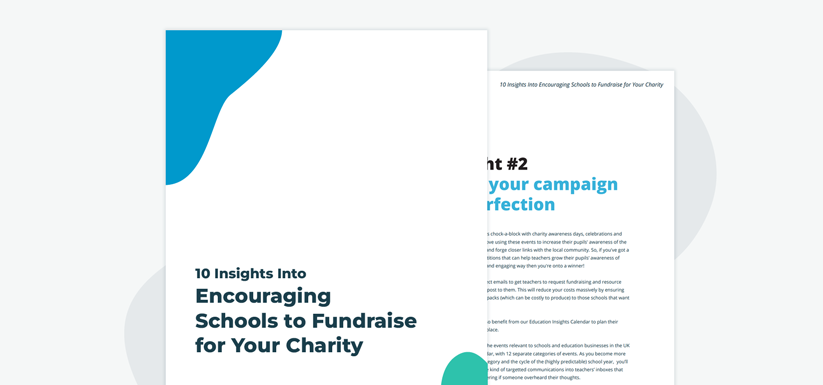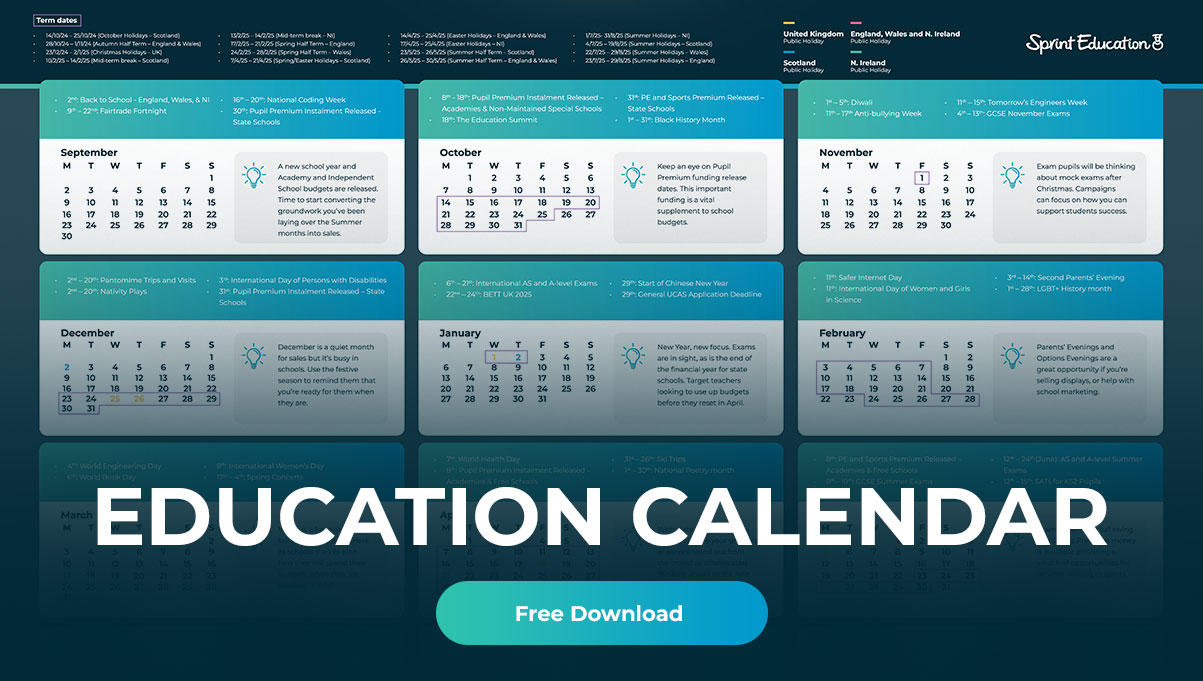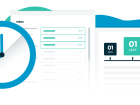Going Global! How to Sell to Schools in the USA
Going Global! How to Sell to Schools in the USA
Are you thinking about marketing your education business to US schools across the pond? If not, you should be.
Are you thinking about marketing your education business to US schools across the pond? If not, you should be.
So, how do you go about selling to elementary schools, high schools, and colleges?
The short answer?
The same way you sell to UK schools!
Educators, wherever they are, care about the same things.
Teachers appreciate patience, honesty, and support of their educational values.
They buy from people they trust and value the advice of their peers.
The psychology is the same, but the strategy is different.
Here are a few starting points on how to sell to the US education market:
-
What do you need to know about the US education market?
-
Who makes the decisions?
-
When should you send your marketing to US schools?
1. What do you need to know about the US education market?
It’s big.
There are roughly 31,000 educational establishments in the UK. The US has eleven times as many.
It’s also worth a bundle. The 30 largest school districts in the US have more than 100,000 students each, and an average budget of 2.1 billion dollars. These are districts like the City of Chicago, Los Angeles Unified, and Miami-Dade.
When all levels of education are accounted for, public and private, the market is worth more than $1.3 trillion dollars.
It’s not useful to drill down into the figures, but these numbers should give you a sense of the scale and value.
What is valuable is knowing how the US education market breaks down.
Identifying the individual building blocks of the market will inform who we want to communicate with, and what we need to say.
The United States’ school system is organised into districts much the same way UK schools organise into local education authorities. In total, there are about 16,000 districts.
Segment and target these districts by size:
- Major – more than 100,000 students
- Large – more than 10,000 students
- Medium – more than 4,000 students
- Small – more than 1,500 students
- Minor – fewer than 1,500 students
In larger school districts, more people are involved in major purchases. In these districts, committees make big decisions. These are the most rewarding and challenging districts to enter, requiring more time and resources to communicate with the right people.
As districts get smaller, the number of decision-makers involved in any one education purchase decreases. The smallest districts may only have two or three high-level decision-makers.
Much like in the UK, school leaders often wear multiple hats. The Principal of a school in a small district might also be responsible for the elementary school curriculum.
Reaching decision-makers in small to medium-sized districts requires less time, money, and effort, and is an excellent place to begin as a new or unknown brand.
Take this sliding scale into account when you’re planning your strategy.
2. Who makes the decisions?
Decision making and purchasing is a group activity.
For example, if you’re selling an online literacy program, you’ll want to reach out to Curriculum Directors, Technology Directors, and Literacy Specialists at the District level.
If the schools you’re targeting are in a large district, you’ll also want to engage with Superintendents and Assistant Superintendents.
Not all Central Office Administrators, including Superintendents, Chief Tech Officers, and Chief Academic Officers want school Principals purchasing and applying solutions on their own. If top administrators have set up a system of solutions and tools across the district, individual schools implementing different solutions is counterproductive.
To get everyone on board, understand the district's objectives and arm the Principal with information that aligns your product or service with those objectives. That way, the Principal can advocate for your product up the chain.
When do schools decide?
We also mentioned early on in this post that educators appreciate patience, and would prefer not to be sold to, but to feel as though they are buying.
That’s because most purchase decisions are usually made on a timeline of weeks to months, with half of the decisions coming in a one to a six-month timeframe.
It’s important to note that the decision to purchase frequently happens before the transaction.
Most US schools will finalise their budget in the second quarter, between April, May and June, and with that finalisation, they will allocate and decide on purchases for the coming year.
It’s then common to make the actual purchase in the summer.
3. When should you send your marketing to US schools?
The K-12 education sector is an exciting market to break into because of its enormous size and potential, but you’ll want to familiarise yourself with the purchasing cycle.
To make a smooth entry into the US market, you’ll want to tailor your marketing communications to deliver the information educators want at each stage in their decision-making process.
Schools, no matter what territory they are in, function on planning, routine, and scheduling. Timing is as essential in the US as it is in the UK. This is good news for marketers. We want to connect with educators when they are looking for our solutions.
When your target audience has a predictable pattern of buying behaviour, determining the send dates for your campaign becomes easier.
The model for the US has three parts:
- Planning occurs May through July. For marketers, this means planning a strategy. For educators, this means professional development and lesson planning, during which they’ll be researching products and solutions to support their teaching.
- Building awareness happens from August to December. Most large purchases are made before August, so now we’re focusing on generating and nurturing leads, and there’s no better way to do that than through email marketing.
- Decisions and trials start to happen from January to April. Shift your focus from encouraging educators to learn about your product to delivering information about its efficacy and sharing results, offering demos and trials.
If you observe these three phases and give educators the information they need, when they need it, you’ll be ready for the purchasing period over the summer.
Schools make purchases year-round, but larger purchases follow a trend, and the majority of significant investments are made from June to August while school is out.
How does selling to US schools sound?
The world loves UK education products.
We supply a fifth of Europe’s ed-tech solutions and are home to the second-largest cohort of international students globally.
Still, many education businesses have ignored the size and potential of the United States’ K-12 education sector, unsure about how to enter.
So, how do you make contact with US teachers and schools?
We’re about to reveal all with the release of something very exciting in the next few days. Watch this space!
In the meantime, get in touch to talk to us about education marketing at home or stateside!
Tags
Education Marketing
Similar Articles


Summer School for Edu-Marketers: Top Reads & Insights
Prepare yourself for September with our essential reports, blogs and videos designed to quench your edu-marketing thirst.


Marketing Charities and Fundraisers to Schools
Learn 10 game-changing insights to encourage schools to fundraise for your charity and enhance your education marketing campaigns when emailing schools.


Expert marketing to schools support and solutions
Expert marketing to schools solutions
Email Head Teachers, Teachers, and Staff Inboxes
Email teachers and staff inboxes
Sell More to UK and Global Schools and Colleges
Sell more to schools and colleges

































